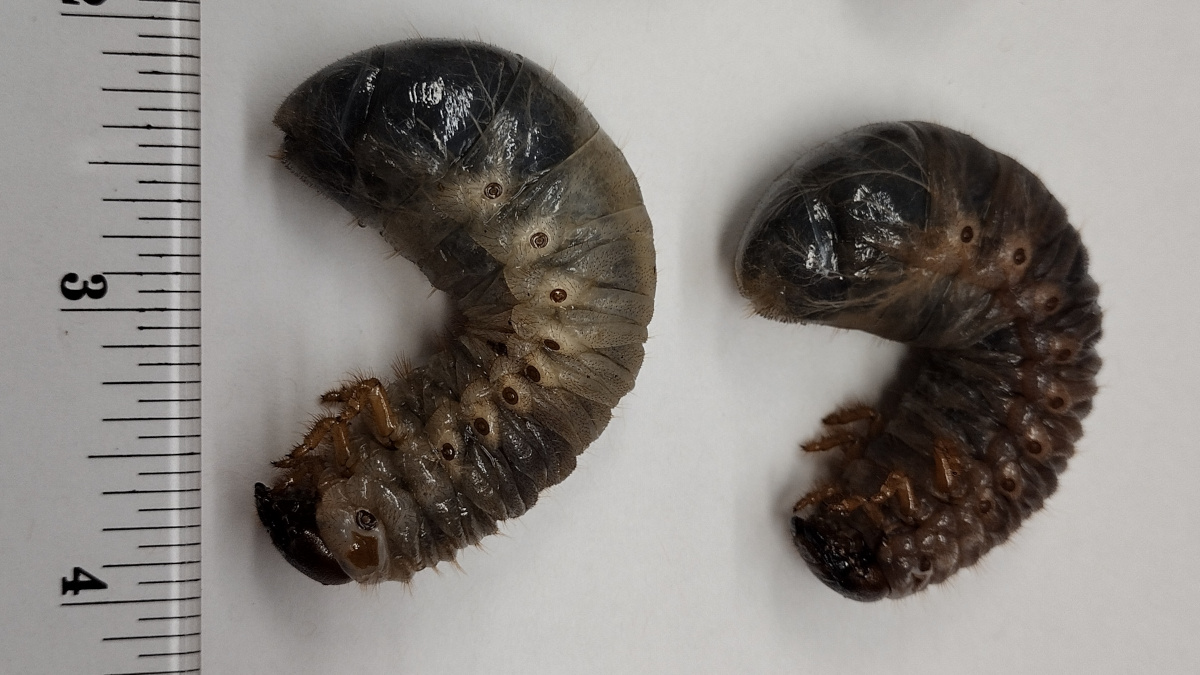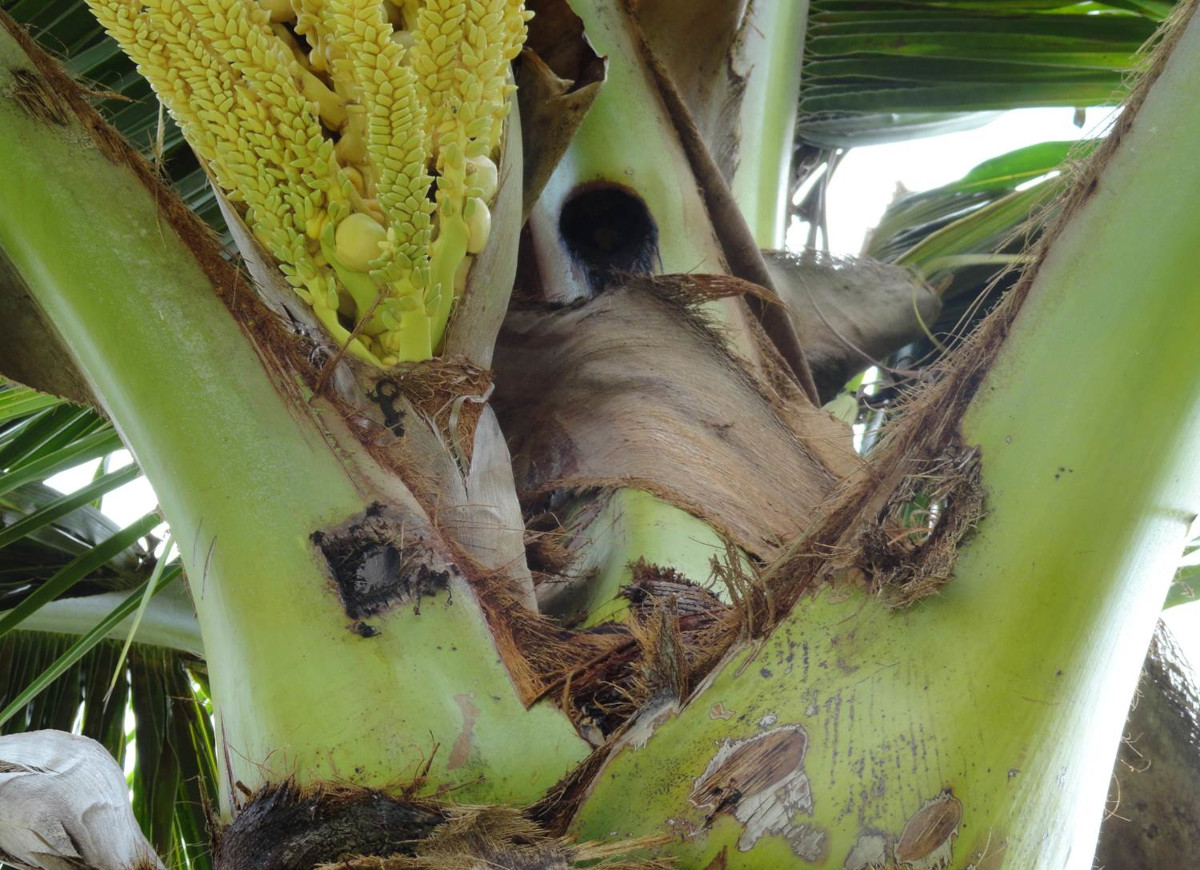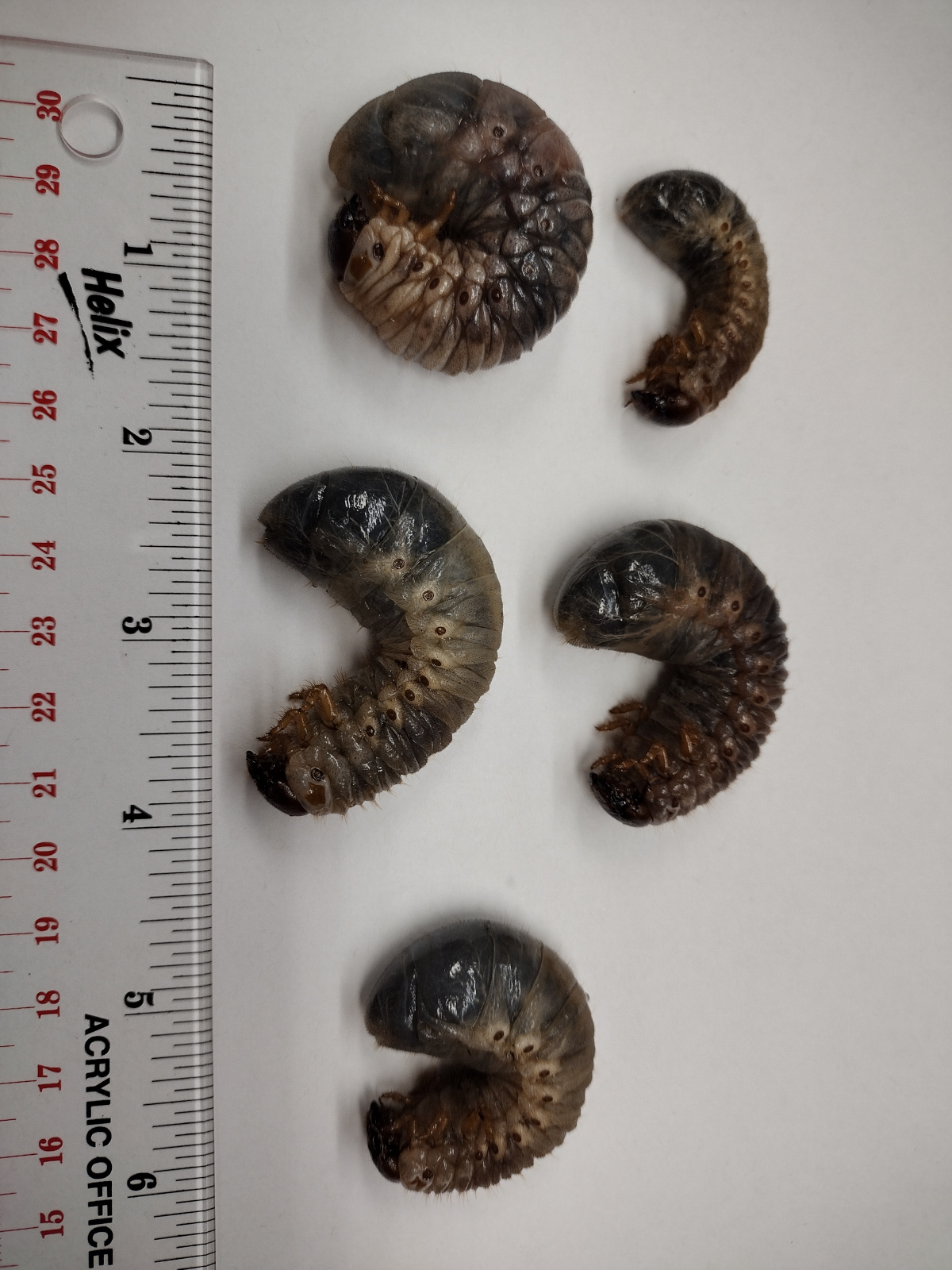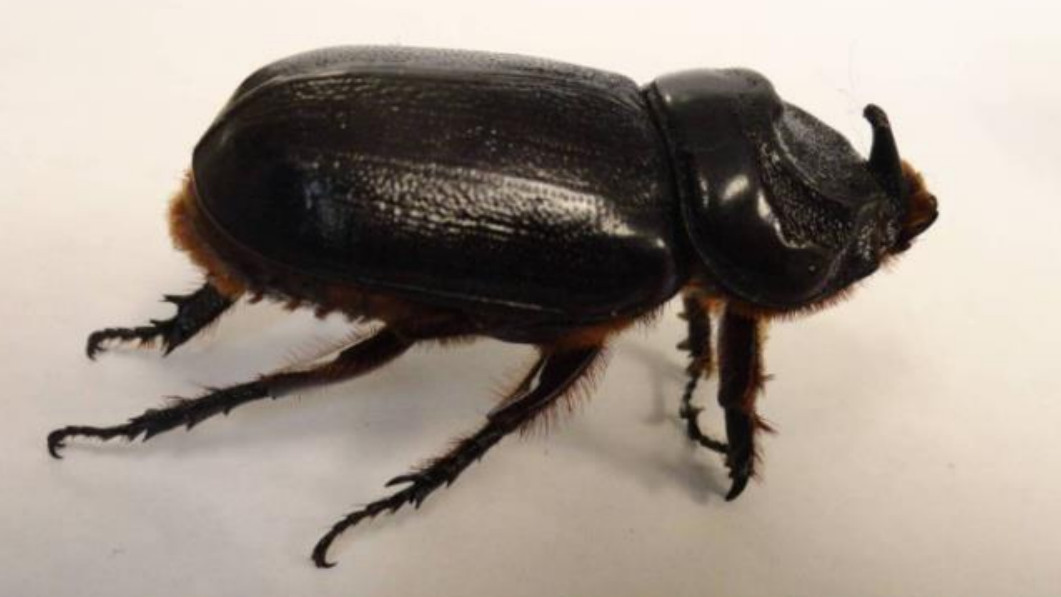(BIVN) – For the first time, the coconut rhinoceros beetle has been found on Hawaiʻi island.
On October 11th, a Waikoloa Village resident found five large CRB grubs, or larvae, in a decaying palm tree stump on the property. The finding was reported to the Coconut Rhinoceros Beetle Response Project. Staff from the Hawai‘i Department of Agriculture responded and collected the specimens. A University of Hawai‘i laboratory on Oʻahu used a DNA-based test to identify the grubs.
On Wednesday of this week, the Waikoloa resident reported finding one more grub on the property. No other grubs or adult CRB have been detected so far on Hawai‘i Island, State officials say.
From the Hawaiʻi Department of Agriculture:
HDOA crews on Hawai‘i Island and CRB response staff from O‘ahu have surveyed the immediate area and have not found additional CRB damage. A multi-agency team will continue to survey the area. Additional pheromone traps, used for early detection of infestations, are being deployed from Waikoloa Beach to Waimea, as well as other areas around the island. Surveillance for CRB has been ongoing on all islands, including traps at airports, harbors and other strategic locations. HDOA staff are also trying to trace the origin and the pathway of the grubs found in Waikoloa.
Residents are encouraged to go to the CRB Response website at crbhawaii.org to learn more about how to detect the signs of CRB damage, how to identify CRB life stages, and how to report any suspected signs of damage or beetles/grubs via the CRB reporting feature. Reports of possible CRB infestation may also be addressed to the CRB Response team at (808) 679-5244, email info@crbhawaii.org or the state’s toll-free Pest Hotline at (808) 643-PEST (7378).
CRB grubs live in decomposing plant and animal waste and may have been inadvertently transported across O‘ahu and to neighbor islands in bags of compost or mulch. Adult CRB prefer to feed on coconut and other larger palms, and are a major threat to the health of these plants.
Residents on all islands are asked to be vigilant when purchasing mulch, compost, and soil products, and to inspect bags for evidence of entry holes. Adult beetles are about 2-inches long, all black and have a single horn on their head.
The CRB is a large scarab beetle that was first detected on O‘ahu in 2013. The beetle has since been detected in many neighborhoods on O‘ahu, and was detected on Kaua‘i in May 2023 where collaborative eradication efforts continue. Last week, several agencies were involved in the pesticide treatment of palm trees via drones at a Kaua‘i golf course. More than 90 palm trees were treated and 40 adult CRBs were killed. Additional treatment efforts will continue on Kaua‘i. Last month, a dead adult CRB was found in a compost bag at a Maui big-box store. No other CRB have been detected on Maui.
CRB is a serious pest of palm trees, primarily coconut palms, as the adult beetles bore into the crowns of the palms to feed on the tree’s sap. New unopened fronds are damaged in this way and when fully opened, may break and fall unexpectedly. If CRB kill or damage the growing point of the palm, the tree may die. Secondary fungal or bacterial pathogens may also attack the wounds caused by CRB, thereby killing the tree as well. Tree mortality after CRB attack has been reported to be anywhere from 10 percent to 50 percent. Dead trees then become a safety hazard as they may fall unexpectedly after the trunk rots, potentially resulting in bodily injury or property damage.
CRB is a major pest of palms in India, the Philippines, Palau, Fiji, Wallis, Nukunono, American and Western Samoa and Guam. It is still not known exactly how the beetles arrived in Hawai‘i.





by Big Island Video News5:59 pm
on at
STORY SUMMARY
WAIKOLOA, Hawaiʻi - For the first time, the invasive CRB has been discovered on the Big Island at a residence in Waikoloa Village.